Tea Ceremony (Japanese Sadou)
Nestled between tradition and modernity, the Tea Ceremony, or Japanese Sadou, offers a serene portal into the intricate beauty of Japanese culture.
The delicate choreography of movements, the significance of each gesture, and the symbolism woven into every aspect of the ceremony create an atmosphere of contemplation and harmony.
As participants step into this world of grace and mindfulness, they embark on a journey that transcends mere observation, inviting them to partake in a ritual that celebrates simplicity and connection.
Key Points
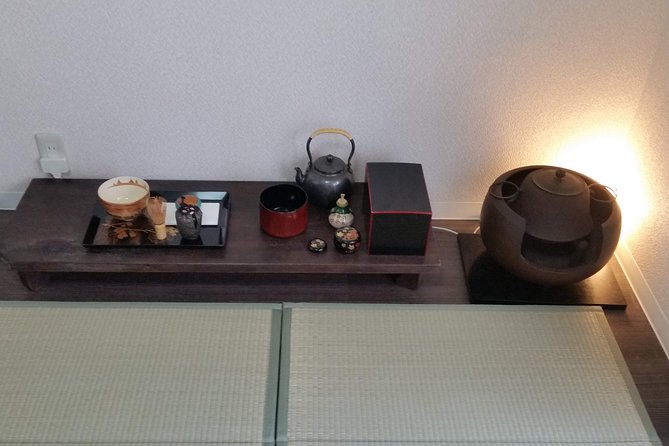
- Embody harmony, respect, and tranquility through the tea ceremony.
- Showcase traditional etiquette values in every precise movement and gesture.
- Symbolize purity and mindfulness in the art of preparing and serving tea.
- Appreciate simplicity and mindfulness in the tranquil ambiance of the ceremony.
Event Overview
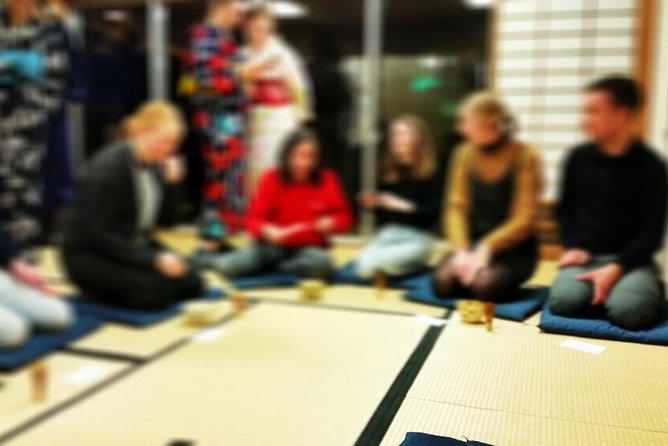
Enjoy the ancient art of the Japanese Tea Ceremony, a traditional practice that embodies harmony, respect, and tranquility. This ceremony holds deep cultural significance, showcasing the values of traditional etiquette passed down through generations.
Participants engage in a ritual that symbolizes purity and mindfulness, following a set of prescribed movements and behaviors. The act of preparing and serving tea isn’t merely a task but a form of art, where every gesture and interaction conveys respect and gratitude.
Through this practice, individuals experience a moment of connection with themselves, others, and nature. The Japanese Tea Ceremony offers a unique insight into Japanese culture, allowing participants to appreciate the beauty of simplicity and the power of mindfulness.
Attire and Tools Provided
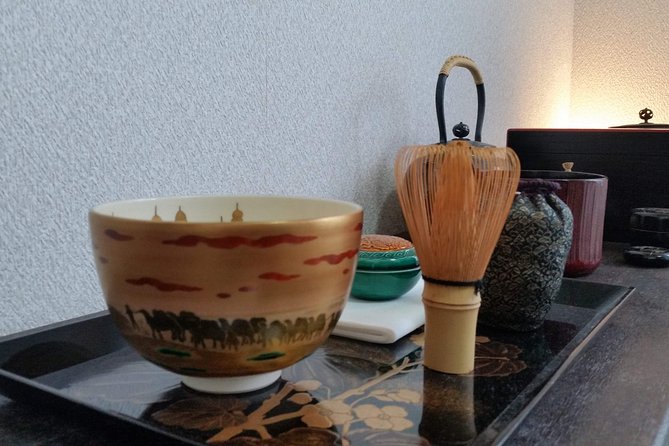
As participants prepare to engage in the Japanese Tea Ceremony, they will be provided with the appropriate attire resembling traditional kimono and the essential tools required for this cultural experience. Following kimono etiquette adds a sense of respect and tradition to the ceremony. The tea ceremony rituals involve precise movements and gestures, emphasizing mindfulness and tranquility. The tools provided include a chasen (tea whisk), chawan (tea bowl), and chashaku (tea scoop), each serving a specific purpose in the ceremony. Here is a glimpse of the tools and attire participants can expect during the ceremony:
| Attire | Tools | Rituals |
|---|---|---|
| Kimono robe | Chasen (tea whisk) | Precise movements |
| Obi (sash) | Chawan (tea bowl) | Mindfulness |
| Tabi (socks) | Chashaku (tea scoop) | Tranquility |
Booking Confirmation Details
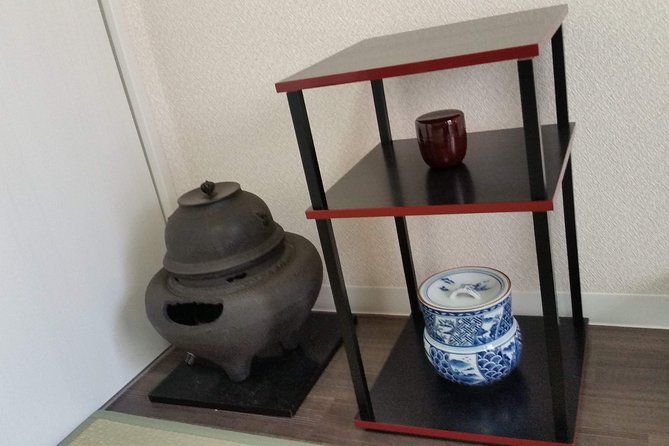
Upon completing the booking process for the Japanese Tea Ceremony, you will receive a confirmation outlining the essential details for their upcoming cultural experience.
-
Cultural Significance: The confirmation will highlight the cultural significance of the tea ceremony, emphasizing its deep-rooted traditions and rituals.
-
Etiquette Emphasis: Participants will be briefed on the proper etiquette to observe during the tea ceremony experience, ensuring they can fully enjoy this traditional practice.
-
Tea Ceremony Experience: Details about what to expect during the tea ceremony, including the serving of matcha tea and the symbolic gestures involved, will be provided to prepare attendees for an authentic and enriching experience.
Accessibility Information
For participants considering attending the Japanese Tea Ceremony, it’s important to note the accessibility information to ensure a comfortable and enjoyable experience. Stroller accessibility is available for those with young children, making it convenient for families to participate in the ceremony.
Plus, the venue is conveniently located near public transportation options, allowing easy access for attendees to reach the Tea Ceremony. This ensures that guests can arrive at the event without hassle, whether they choose to use public transportation or other means of travel.
Meeting and Pickup Instructions
Guests will convene at the designated meeting point located in Japan, specifically at 530-0016 Osaka, Kita Ward, Nakazaki, 2-chōme813 香門ハイツ, to embark on the enlightening journey of the Japanese Tea Ceremony.
-
Cultural Etiquette: Participants will be introduced to the traditional customs and manners observed during the Tea Ceremony, providing a deeper understanding of Japanese culture.
-
Transportation Options: Information on available transportation modes to reach the meeting point will be shared, ensuring guests can easily navigate their way to the venue.
-
Local Customs: Engage in a cultural experience by immersing in the local customs and practices surrounding the art of tea preparation, enhancing the authenticity of the ceremony.
Participant Guidelines
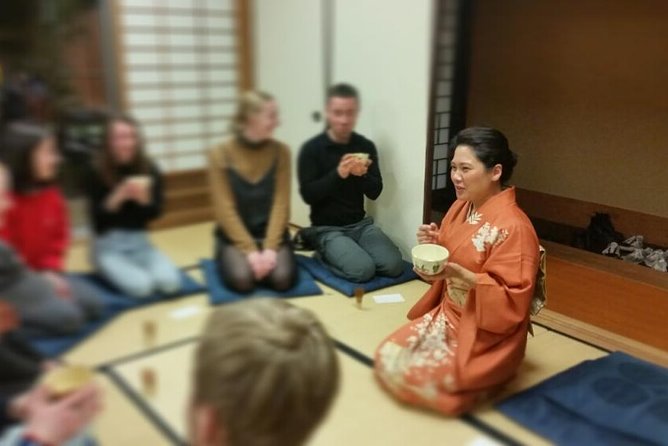
Participants will be guided through the cultural intricacies and protocols essential to fully enjoy the profound art of the Japanese Tea Ceremony. Cultural etiquette plays a vital role in the ceremony, emphasizing respect, mindfulness, and harmony with others.
Understanding the proper way to conduct oneself during the ceremony, from the way of bowing to the correct handling of utensils, is crucial. Additionally, you will learn the meticulous process of tea preparation, including the precise measurements of matcha powder and hot water, the methodical whisking technique, and the graceful way of serving the tea.
Cancellation Policy and Reviews
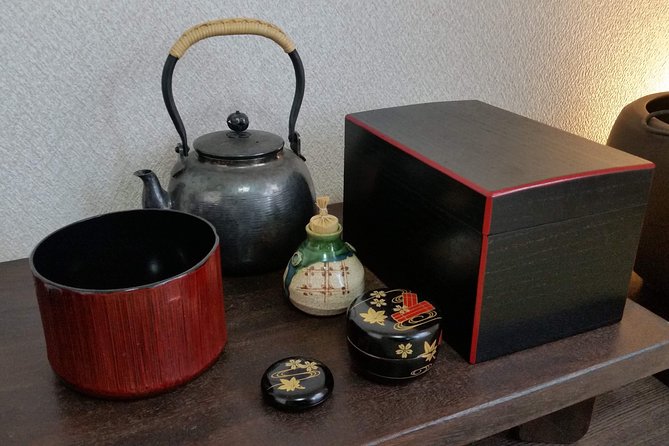
Discover the stringent yet fair cancellation policy and insightful reviews that provide valuable feedback for those interested in partaking in the Japanese Tea Ceremony experience. When considering this culture opportunity, it’s essential to be aware of the following:
-
Refund Process: Understanding the full refund option available up to 24 hours in advance ensures peace of mind for potential participants.
-
Service Quality: Customer feedback on service quality can offer a glimpse into what to expect during the tea ceremony, aiding in decision-making for interested travelers.
-
Traveler Satisfaction: Reviews from previous participants can highlight aspects of the experience that contribute to overall traveler satisfaction, helping prospective attendees gauge expectations and potential enjoyment.
Common questions
What Is the Significance of the Tea Ceremony in Japanese Culture?
In Japanese culture, the tea ceremony symbolizes a profound cultural tradition that fosters a spiritual connection. Through meticulous rituals, participants honor harmony, respect, purity, and tranquility. This practice embodies Japanese aesthetics, mindfulness, and interpersonal bonds.
Are There Any Specific Rules or Etiquette That Participants Should Be Aware of During the Tea Ceremony?
When attending the tea ceremony, participants should observe strict etiquette, respecting traditions passed down through generations. Understanding the proper conduct, like bowing and silence, is essential to fully immerse in this cultural experience.
Can Participants Take Photographs During the Tea Ceremony?
Participants can take photographs during the tea ceremony. However, there may be etiquette restrictions regarding when and where photography is allowed. It’s essential to follow any guidelines provided to respect the tradition and the experience for all.
Is There a Traditional Tea Ceremony Meal Included as Part of the Experience?
Traditional cuisine is a significant aspect of cultural customs in a tea ceremony. Participants can expect an authentic traditional tea ceremony meal as part of the experience, enriching their understanding of Japanese culinary traditions.
Are There Any Age Restrictions for Participating in the Tea Ceremony?
Age restrictions and participation rules vary based on the activity. It’s essential to check the guidelines before booking. Some experiences may have specific age limitations, while others welcome participants of all ages.
Last Words
Enjoy the elegance and mindfulness of the Japanese Tea Ceremony, known as Sadou, for a captivating journey into tradition and grace.
With kimono-like attire and essential tools provided, travelers can experience this ancient practice firsthand in Osaka.
While not wheelchair-friendly, the event accommodates service animals, ensuring a memorable encounter with Japan’s rich cultural heritage.
Don’t miss this opportunity to partake in a truly enlightening experience that will leave you with a deeper appreciation for Japanese traditions.